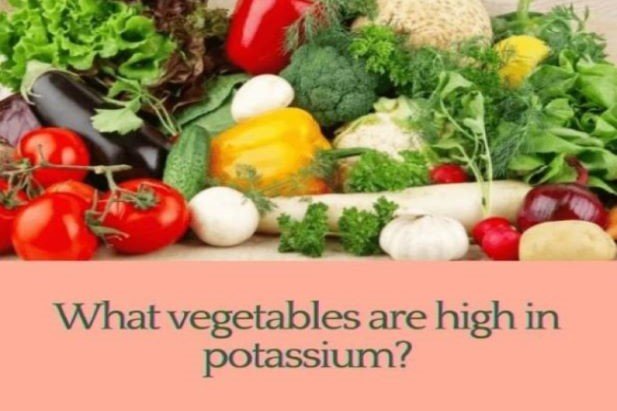Potassium is a mineral that our body needs to work appropriately. It is a sort of electrolyte. Potassium assists your nerves with working and muscles to contract. It helps your pulse stay normal. It likewise helps move supplements into cells and side effects out of cells. But the question here is what vegetables are high in potassium? Let’s find out.
Potassium-rich eating routine
An eating regimen wealthy in potassium assists with counterbalancing a portion of sodium’s destructive consequences for circulatory strain.
Numerous individuals get all the potassium they need from eating and drinking. Wellsprings of potassium in the eating routine include:
- Mixed greens, like spinach and collards
- Organic products from plants, like grapes and blackberries
- Root vegetables, like carrots and potatoes
- Citrus natural products, like oranges and grapefruit
Your kidneys help to keep the perfect measure of potassium in your body. If you have persistent kidney sickness, your kidneys may not eliminate additional potassium from the blood. A few medications can additionally raise your potassium level. You may require an exceptional eating regimen to bring down the measure of potassium that you eat.
Potassium is essential for typical working, all things considered. It manages the heartbeat, guarantees the appropriate capacity of the muscles and nerves, and is crucial for orchestrating protein and utilizing starches.
Millennia prior, when people wandered the earth assembling and chasing, potassium was plentiful in the eating routine, while sodium was scant. The so-called Paleolithic eating regimen conveyed multiple times more potassium than sodium. Today, most Americans get scarcely 50% of the suggested measure of potassium in their weight control plans.
Importance of potassium in our body
The normal American eating routine contains about twice as much sodium as potassium due to the dominance of salt covered up in handled or arranged food varieties and the shortage of potassium in those varieties.
This imbalance, which is at odds with how people developed, is believed to be a significant supporter of hypertension, influencing every three American grown-ups.
The satisfactory admission proposal for potassium is 4,700 mg. Bananas are frequently promoted as a decent wellspring of potassium.
However, different organic products (like apricots, prunes, and squeezed oranges) and vegetables (like squash and potatoes) additionally contain this regularly disregarded supplement.
Below is a list of the commonly known fruits and vegetables high in potassium.
Potassium in fruits and vegetables
1. Potatoes
Potatoes are a savvy decision —leave the supplement-rich skins on. A medium-heated potato with the skin on contains more than 900 milligrams of potassium. A yam with skin? More than 500 milligrams.
2. Vegetables
Beans are a decent wellspring of potassium. White beans and adzuki beans contain almost 600 milligrams for every serving of half-cup. Great Northern beans, Pinto beans, lima beans, and navy beans all have more than 350 milligrams for every half-cup. Soybeans (otherwise known as edamame, also known as heavenly) and lentils are likewise acceptable wellsprings of potassium.
3. Juices
Many frequently go after entire organic products over juices since exclusive organic products are a decent wellspring of fiber. Yet, don’t exclude juice completely.
Prune juice and carrot juice both sneak up suddenly: about 689 milligrams for some carrot juice and above 700 milligrams for a similar measure of prune juice.
Squeezed orange and pomegranate juice are likewise acceptable picks, each containing around 500 milligrams for every cup. Experts suggest watching your parts, however, as a result of the sugar content.
4. Fish
Famous fish like mackerel, salmon, fish, halibut, and snapper all have 400 milligrams or more of potassium in a 3-ounce filet. Is Chowder more your thing? Only 3 ounces of canned mollusks will get you as much as 500 milligrams.
5. Salad greens
Popeye had the correct thought. A half-cup serving of concocted spinach contains 400 milligrams of potassium. A similar measure of Swiss chard has more than 450 milligrams, and beet greens over 600 milligrams.
6. Dairy
You realize dairy is an awesome wellspring of calcium. Ends up; it’s an extraordinary wellspring of potassium, as well. One cup of skim or low-fat milk contains around 350 to 380 milligrams of potassium. What’s more, plain yogurt will net you over 500 milligrams for each cup (also protein and solid probiotics).
7. Tomatoes
Some cleaved tomatoes convey more than 400 milligrams of potassium, while some tomato juice or tomato puree above 500 milligrams. Concentrated tomato glue is much more extravagant in the mineral, with more than 650 milligrams for every quarter cup (marinara sauce, anybody?).
8. Bananas
These yellow organic products might be the most popular wellspring of potassium. In reality, one medium banana contains around 422 milligrams. Banana’s cousin, the plantain, is additionally a potassium-rich pick.
9. Different natural products
Bananas aren’t solitary natural products loaded up with potassium. Melon, dates, nectarines, and oranges all have more than 250 milligrams for every half-cup serving. Dried peaches, apricots, prunes, and raisins are acceptable sources as well.
10. Avocadoes
As though you required another motivation to go after the guacamole, a half-cup serving of rich avocado contains around 364 milligrams of potassium.
From natural product salad to avocado toast, an extravagant fish supper, to a bowl of tomatoey spaghetti, there are countless extraordinary approaches to get your fill of potassium. Your well-being — and your taste buds — will much be obliged.
